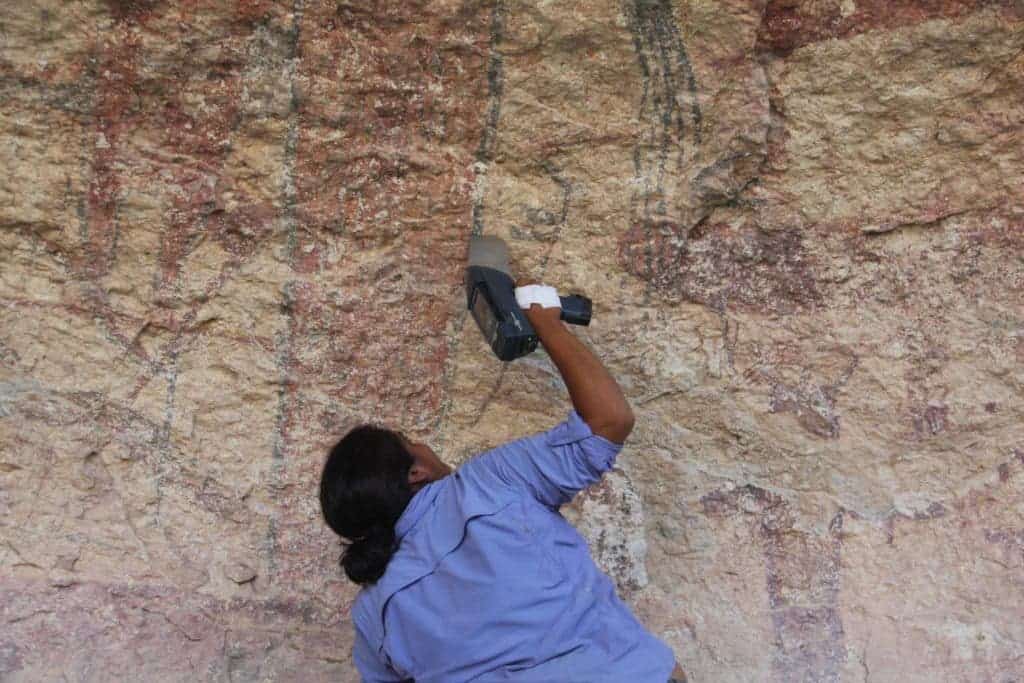Scientists are using portable, non-invasive X-Ray techniques see beneath the surface of cave paintings and uncover what lies in the deeper layers. They came across something unexpected.

A portable X-ray device has revealed new insights about the pigments used in rock art without damaging the site. Image credits: Shumla Archaeological Research and Education Center.
Prehistoric cave paintings have fascinated humans for centuries. In addition to the sheer wonder and artistic value, they can also tell us a lot about the people who made them. However, studying these paintings isn’t exactly easy.
For starters, they’re obviously old and degraded. Secondly, you also don’t want to be taking samples from the cave — because that would be damaging the painting. So instead, researchers are turning to hi-tech techniques. Speaking at the American Chemical Society meeting, researchers from the Shumla Archaeological Research & Education Center presented an X-ray method that is not only non-invasive but also portable.
“In this particular work, we used a technique called portable X-ray fluorescence spectroscopy (pXRF), in which a handheld instrument can be carried to a site and used right there, on the spot,” says Karen Steelman, Ph.D., who led the study. “It gives you the elemental analysis of a specific material, and is the first step in figuring out how ancient artists used different materials to make their paintings.”
For the particular study, Steelman and colleagues visited the Rattlesnake Canyon Site along the Rio Grande, known for its array of paintings. They first took measurements at 90 locations of unpainted limestone, to assess the makeup of the geological canvas. They then used pXRF to measure 138 areas which were painted. The composition indicated overlapping pigments of red, black, white and yellow, although these were not always visible to the naked eye.
The team also found traces of something they weren’t expecting: gunshot damage. The result came as a complete surprise, so in order to confirm their suspicions, they again turned to pXRF to identify any trace elements that could have come from ammunition. In several sites, pXRF revealed traces of lead, mercury, and selenium — a clear indicator of gunshots., which were not present in the undamaged areas. Turns out, this is a common occurrence in the area.
“Unfortunately, we often see suspected bullet impacts at rock art sites,” Steelman says. “Most of this is older types of vandalism from the early 1900s, and we used the portable X-ray to determine what trace elements were present.”
However, there’s also a silver lining to this story: researchers now hope to petition state and federal agencies for conservation funds, to ensure that no further damage is done to the ancient rock sites.
There are over 350 known rock art sites in the Lower Pecos Canyonlands alone. Steelman and colleagues will continue to analyze as many of them as possible.









